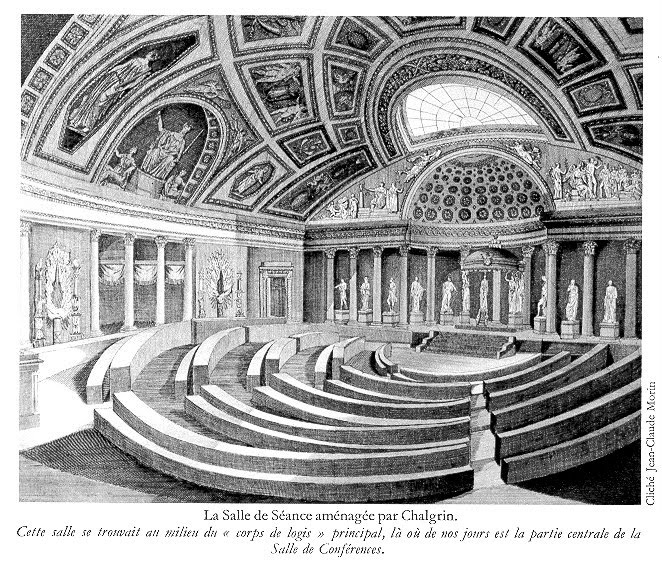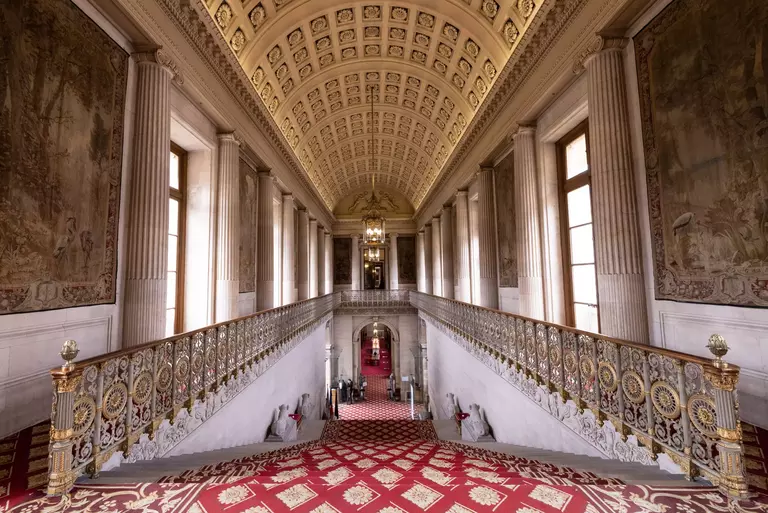
Declared truly national, the Luxembourg, for the first time in its history, was deserted. Very soon, however, a new but dramatic role was found for it; it was converted into the "Maison nationale de sûreté" [National Prison], in which there were up to 1000 prisoners, Camille Desmoulins, Danton, André Chénier, among others. They often left it for the scaffold. After the 9th Thermidor, it was the turn of Robespierre's friends to take the place of their victims. The Terror ended...
With the "Thermidorian revolution" (1795), the palace was assigned to the "Directoire" Executive. The Petit Luxembourg housed four of its five Directors. Only Barras was not satisfied with it and installed himself in the Grand Palais, where he organised brilliant entertainments. The cost to the State of the 18th Brumaire drove out the directors. The senators of the Empire were to succeed them, thereby opening a new page in the history of the palace which had formerly been princely and was now parliamentary. The constitution of the year VIII (1799) instituted a "conservative Senate" to be the guardian of the constitution. The Luxembourg was assigned to it. The palace had to be altered and given the imposing style desired by Bonaparte.
The architect, Chalgrin, was thus persuaded to remove the terrace at the back of the courtyard, and on the ground floor provide a vestibule with columns at the site of the main staircase; and, in particular, to do away with the old Rubens Gallery and build the Honneur monumental staircase in the west wing. The old apartments of Maria di Medici were altered. The floor, which the 80 senators only occupied in 1804, was built in the middle of the present Conference Hall.
A political assembly composed of moderates, conservative in its final objectives, but opportunistic in addressing the reality of its day, the Senate was to be laden with honours for fifteen years... before, in 1814, at the proposal of Talleyrand, voting the Emperor's downfall.
On his return, Louis XVIII set up the House of Lords, soon converted into a political court of justice; tragic times, which saw the Lords condemn Field Marshall Ney to death, executed in the avenue de l'Observatoire on 7 December 1815. The second House of Lords, that of Louis Philippe, which counted more than 270 members, clamoured for an appropriate chamber. The palace had to be enlarged. Alphonse de Gisors decided in 1836 to extend the lateral façades in the same style as the side facing the gardens. In the space thus gained at the expense of the park, he provided a new Chamber of Sessions panelled with sculpted woodwork, on the first floor. In order to complete the work of Gisors, Delacroix decorated the cupola and the half-dome of the library overlooking the garden.
